For the last decade, technology has warped our society into believing that it is apart of the natural order of things. It has become harder to remind us of the reality of the impact it has made across all aspects of our lives. There isn’t a day that goes by where I do not constantly check email, NPR news, Facebook, Twitter, Snapchat and Instagram. On occasion I post or comment on one of these digital outlets and don’t normally think of how I may be perceived. Since it has become integrated into something of a second nature, the thought of my audience passes me by. After some long reflection and researching, I have become more alarmed that this perception of audience had surpassed my thought process. Moreover, the content that I was posting and how it would be perceived by this worldwide audience. In this essay I aim to speak to what it means to be reputable online, why it’s important, and how to pick out what is respectable while also striving to become a reputable writer. Good writing does not go unnoticed on the web and so it can be put to more use than just sharing through social media. Decent digital works from respected web authors can act as jumpstart for how we as readers online can help start to generate ideas to help solve social, political and economic issues right here at home and internationally.
Scholarly, Social and Technical
To be taken seriously in the digital world, the back end of publication must be scholarly, social and technical according the Douglas Eyman in Composing for Digital Publication: Rhetoric, Design, Code. Scholarly refers to whether a disciplinary field values digital writing. Social is how a field behaves when implementing those values within the publishing process. Finally, technical is how systems support the perpetuity of scholarly and social infrastructures if at all. These three points relate similarly to the three points that Jen Rajchel presents about how to approach digital writing. The questions she poses are:
- Is this medium adding a critical lens to the design of my argument?
- Is this the audience I hope to be part of?
- What are the terms of service and do I feel comfortable with the kind and amount of information I am sharing?
Rajchel claims these questions provide a platform to critically assess the audience and allows her to expect interactions with that audience. Both Eyman and Rajchel take into consideration what most people, like myself, do not think about when constructing a piece of digital work. These kinds of values and standards are what create a clear dividing line between writer’s exhibiting digital literacy and writer’s that are dependent on instant gratification. Writer’s that depend on the audience also highly anticipate a response. This response is what drives them to write more and more without focusing on the desire to connect with the audience through a separate writing task that perhaps they spent more time on.
Yet, in order to reach that final step of a polished piece of work this platform that Rajchel is assessing must be created. It can also be broken down into three categories presented in Eyman’s article. He analyzes rhetoric, design and code to better understand the digital literacy development that may be lacking and how it can be incorporating as a part of foundations for digital writing. In Rhetoric, he argues that, “authors of digital writing need to ask themselves: is this work best presented in a more linguistically rich or visually rich?” Additionally he focuses on how the audience will make use of the writing or digital object; “usability speaks to the degree to which the users’ needs have been taken into account in the design of a text; and “usefulness” is tied to the disciplinary networks in which a text is designed to circulate.” He presents that it is not what design is but what design does that is important in digital writing. By this he means “design is a rhetorical function that plays an important role in each of the principles of rhetoric, mostly related to style but also of organization.”(Eyman) He defines code as being synonymous with grammar in that it is the framework that ties rhetoric and design by allowing interactivity. The aspect of interactivity allows the audience to feel connected to the work and also creates a connection between the reader and the author. The web by its nature is built on connectivity, so by implementing code into digital works thereby enforces digital works to be shared with anyone on the web.
Although digital literacy is important to becoming an established writer online, it is not the stand-alone factor. As Eyman and Rajchel denote, the consideration of the audience, design of the work and the amount of desired connectivity is to be included in digital writing pieces.
Resilient Writers Prevail
As a millennial I have discovered an empowering ability to create a “wallpaper of my life” (cite sarah murray) through social media. As technology has become more readily available, millennials have put themselves in the center a global network of communication. The placement at the center of the universe like everything else has its advantages and disadvantages.
Sarah Murray, a writer and journalist whose work focuses on sustainable development and the relationships among business/society/environment, best describes one advantage to this centered connectivity in that it has “created in many [individuals] a desire to help solve big global problems.” The best example I can think of is the blog, Humans of New York . What started out as collective map of New York’s inhabitants has transformed into a worldwide phenomenon. The photographer, Brandon Stanton, walks around New York City every day to take pictures of strangers and collects quotes and short stories from them. More recently, he traveled to Pakistan and photographed a woman who was protesting forced labor. After the initial post he set up an Indiegogo campaign to raise about $100,000 for the woman’s organization against bonded labor. Four days after the campaign had launched, $2.1 million dollars had flooded in for the cause just from a series of a few photos and the stories of hardship in Pakistan that has affected 4 million people.
Stanton’s efforts have earned him a level of respect online that has implemented the three requirements that Eyman presents. His posts are scholarly in that he values peoples stories and comments by posting them along side their photo. Most aren’t long and detailed but for the ones that he chooses to highlight, he doesn’t change the person’s words. Rather he directly quotes what they are saying showing that he is taking value in what they are saying. HONY is social in that it behaves in a unique way as Tumblr account, Facebook, Instagram and Twitter. It is like nothing else out on the web now. Finally it shows Eyman’s definition of technical in that it supports the continuing of scholarly and social infrastructures by relating posts to real world problems and having the ability to share that across social media outlets.
All of Brandon Stanton’s of the world pushing for worldwide connectivity in digital writing comes at a high price. Murray denotes that all the technology has brought along anxiety, stress and doubts. As Kim Wilkins, the author of Writing Resilience in the Digital Age, suggests,
“Rather than suggesting resilient writing stems from good time management, then, I suggest it stems from good writing habits. It is not strictly speaking our use of time that is the problem, but those ingrained habits that are impinging on writers’ energy and productivity. For example: booting up the computer leads to downloading email; struggling with a difficult sentence leads to opening Facebook; Googling a research question leads to Internet surfing without a time limit. Many of these habits arise out of an increasing insistence that writers develop a digital authorial identity or ‘platform’… the tools used to develop a platform can lead to distraction, anxiety, self-blame, and stasis: all of these are the enemy of resilient writing.” [Wilkins 68]
Wilkins suggests work ethic is what is driving the problems with digital writing. The anxiety and stasis is what creates a “clash of motivations: the intimate desire to create art; the public drive to sell that art” [Wilkins 69]. This is important to being a distinguished writer online because technology has added another platform for writers to build masterpieces of work however, it has taken away their tedious work ethic to focus on what is before them. In times of refocusing or reviewing a writing assignment an escape is presented to jump from one task to another by checking Twitter or Facebook.
This comes into play when you need to perform research for a certain project. When it comes time to type into the search bar on Google, realistically are you going to just type in the subject or will you automatically jump to Google Scholar? What’s the difference? Why does it matter? Well, there is a difference when looking at information on Wikipedia to PubMed, a database for biomedical literature. The difference is that the information on Wikipedia has been altered by anyone trolling the Internet. Where as the information on PubMed has been edited by established publishers and reviewed several times before actually getting published. The literature on PubMed has gone through a tedious process to create a true work of art compared to a 16 year old kid who is bored and wants to change the Wikipedia page.
I see that this is an extreme case in terms of digital writing however; I believe it drives the point home that dedicated work ethic pays off. Whether it be Brandon Stanton’s efforts to raise money for a woman featured in one of his photos or it be being published on a well-known biomedical database such as PubMed.
So What is it Going to Take?
Now its clear what it means to be reputable online and why its important so how can a writer be sustainable in the sense of producing work that exhibits digital literacy without all the distractions of the web? But with technology and the web space always changing, writers online need to be able to evolve. At the same time, they must not lose their credibility. This is where core concepts of writing, in general, play a role in writing online.
Brian Carroll, the author of Writing for Digital Media, suggests 8 fundamentals that can spread across any medium and any audience. They are:
- Be brief
- Be precise
- Be active
- Be imaginative
- Be direct
- Be consistent
- Be aware
- Be concise
These fundamentals are good checks for sustaining good writing online and in general because they point out the obvious parts of the writing process we often forget. In thinking of what you personally read online, any piece that doesn’t exhibit these 8 fundamentals is not something you will be reading for long.
Carroll presents steps to getting the writing processes started so that you can engage the audience without losing credibility. First he suggests to create an idea or a purpose for writing. To achieve this he presents activities such as brainstorming, clustering and free writing. Next, map it all out with questions such as, what is/are the main points and who is the primary audience? The audience you hope to reach should impact the decision of the topic, tone, complexity, etc. Once these questions have been answered then a blueprint, or outline of the project can be laid out to see how the content is presented. Again, relating how design is important in not what it is but what it does for the writing and for the reader. Finally, he belabors the point of revision. As the importance of being credible online was highlighted above, Carroll’s final step strengthens the argument that revision is crucial in writing online. Editing allows a writer to create his or her own consistent style of writing. In turn, this is what can help writers online start on a path to becoming a sustained decent writer.
The opportunity to participate in academic digital writing at Dickinson has provided an outlet to express some of my artistic abilities. Writing loosely is much like painting on a canvas in that with each brush stroke is free flowing. Almost all of the writing I do at Dickinson is very formal and directed toward the biology research community. In that kind of writing style, I don’t get to offer my opinion, everything is objective.
I have found that writing online about something I am passionate about has given me another way to define my identity online and in the Dickinson community. This has numerous advantages in and outside the classroom, especially at a liberal arts college. Implementing digital writing in courses allows for connections to be drawn between various disciplines. Which is what is emphasized at a liberal arts school. I have taken courses in areas such as Africana Studies and Philosophy that have allowed me to think outside the box for areas of study in Biology.
Activating a different part of your brain is a way to see and think in different ways. A liberal arts education encourages this notion. I believe we could all continue the efforts that Brandon Stanton started but on a much larger scale. However, in order for this occur there must be good design, strong connectivity to the audience and countless revisions. Piggybacking off of Stanton’s general idea of philanthropy for a greater cause from a single post can serve as a springboard for similar ideas to start to develop solutions for domestic and international issues.
Works Cited
Carroll, Brian, [1965-]. “Writing and Editing For Digital Media.” N.p.:Routledge, 2014. Africa-Wide Information. Web. 29 Oct. 2015.
Eyman, Douglas, and Cheryl E. Ball. “Composing For Digital Publication: Rhetoric, Design and Code.” Composition Studies 42.1 (2014): 114-117. Education Research Complete. Web. 20 Oct. 2015.
Johnson, Alex. “Humans of New York Raises $2 Million to End Forced Labor in Pakistan.” NBC News. 19 Aug 15. <http://www.nbcnews.com/news/world/photographers-campaign-raises-2-million-end-pakistani-forced-labor-n412031>
Rajchel, Jen. “Consider the Audience,” in Web Writing: Why and How for Liberal Arts Teaching and Learning, ed. Jack Dougherty and Tennyson O’Donnell (University of Michigan Press/Trinity College ePress edition, 2014)
Wilkins, Kim. “Writing Resilience In the Digital Age.” New Writing: The International Journal For The Practice & Theory of Creative Writing 11.1(2014):67-76. Literary Reference Center. Web. 20 Oct. 2015.










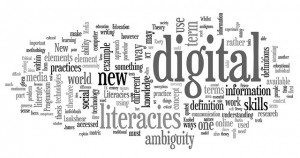
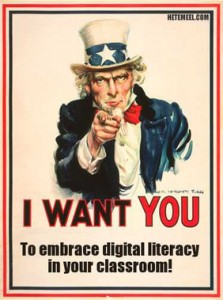
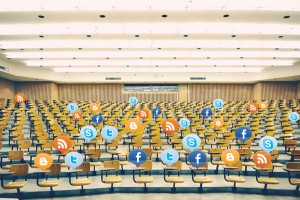







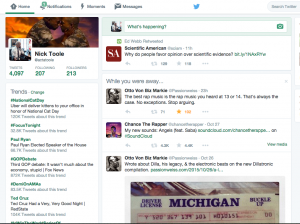

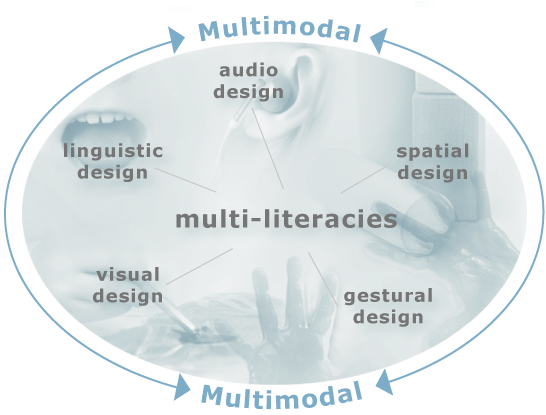
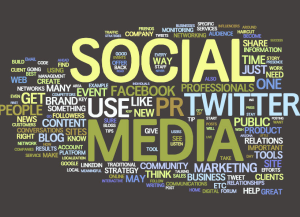
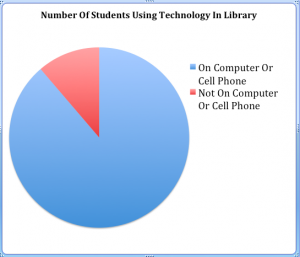


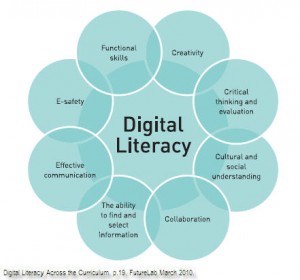


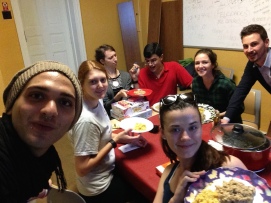





 t!
t!
